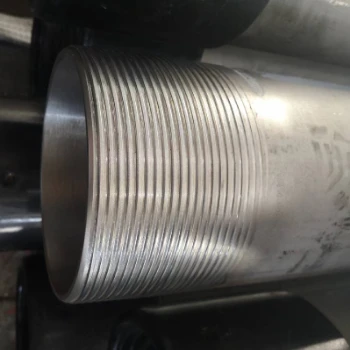- Afrikaans
- Albanian
- Amharic
- Arabic
- Armenian
- Azerbaijani
- Basque
- Belarusian
- Bengali
- Bosnian
- Bulgarian
- Catalan
- Cebuano
- Corsican
- Croatian
- Czech
- Danish
- Dutch
- English
- Esperanto
- Estonian
- Finnish
- French
- Frisian
- Galician
- Georgian
- German
- Greek
- Gujarati
- Haitian Creole
- hausa
- hawaiian
- Hebrew
- Hindi
- Miao
- Hungarian
- Icelandic
- igbo
- Indonesian
- irish
- Italian
- Japanese
- Javanese
- Kannada
- kazakh
- Khmer
- Rwandese
- Korean
- Kurdish
- Kyrgyz
- Lao
- Latin
- Latvian
- Lithuanian
- Luxembourgish
- Macedonian
- Malgashi
- Malay
- Malayalam
- Maltese
- Maori
- Marathi
- Mongolian
- Myanmar
- Nepali
- Norwegian
- Norwegian
- Occitan
- Pashto
- Persian
- Polish
- Portuguese
- Punjabi
- Romanian
- Russian
- Samoan
- Scottish Gaelic
- Serbian
- Sesotho
- Shona
- Sindhi
- Sinhala
- Slovak
- Slovenian
- Somali
- Spanish
- Sundanese
- Swahili
- Swedish
- Tagalog
- Tajik
- Tamil
- Tatar
- Telugu
- Thai
- Turkish
- Turkmen
- Ukrainian
- Urdu
- Uighur
- Uzbek
- Vietnamese
- Welsh
- Bantu
- Yiddish
- Yoruba
- Zulu
Hexagonal Head Bull Plug for Secure Pipe Sealing and Connection in Industrial Applications
Exploring the Hex Head Bull Plug A Versatile Tool in Fluid Dynamics
The hex head bull plug, a seemingly simple yet remarkably versatile piece of hardware, plays a vital role in various industries, particularly in fluid dynamics and pressure containment applications. Understanding its design, usage, and benefits provides insight into its significance in modern engineering and maintenance practices.
What is a Hex Head Bull Plug?
A hex head bull plug is a type of fitting used to seal the ends of pipes, valves, or other equipment. Its distinctive hexagonal head allows for easy installation and removal using standard wrenches, making it a go-to choice for maintenance teams and engineers. The term bull plug often refers to its robust design, which is intended to withstand high pressure and prevent leaks in critical systems.
Typically made from durable materials such as stainless steel, carbon steel, or brass, hex head bull plugs are engineered to provide reliable sealing capabilities in various environments. Their features, such as corrosion resistance and high tensile strength, make them suitable for applications in industries like oil and gas, water management, chemical processing, and HVAC systems.
Applications of Hex Head Bull Plugs
The versatility of hex head bull plugs allows them to be employed in a wide range of applications. One of the primary uses is in piping systems, where they are used to close off the ends of pipes when maintenance or replacement is required. This is particularly important in preventing fluid leaks that could lead to environmental hazards or operational disruptions.
In hydraulic systems, hex head bull plugs are crucial for maintaining system integrity by effectively sealing ports and ensuring that pressure levels remain stable during operation. These plugs are also used in pneumatic applications, where the containment of air and gas is necessary for optimal performance.
hex head bull plug

Another significant application is in instrumentation. Hex head bull plugs can serve as closure points for sensors and gauges, preventing contamination and ensuring accurate measurements. In scenarios where systems are not in use, these plugs provide an essential barrier against dirt, debris, and moisture.
Benefits of Using Hex Head Bull Plugs
Using hex head bull plugs offers several advantages. Their ease of installation and removal simplifies maintenance tasks, reducing downtime for equipment and systems. With their sturdy design, these plugs provide a secure seal that minimizes the risk of leaks, which is critical in maintaining safety and efficiency in operations.
Moreover, the ability to choose from various materials allows engineers to select plugs that are best suited for specific applications. For instance, stainless steel bull plugs are preferred in corrosive environments, while brass plugs may be selected for their affordability and adequate strength in less demanding contexts.
Another benefit is their compatibility with various thread types, including NPT (National Pipe Thread) and BSP (British Standard Pipe), making them adaptable to diverse piping systems worldwide. This flexibility ensures that hex head bull plugs can be integrated seamlessly into existing setups, further highlighting their usefulness across different industries.
Conclusion
In conclusion, the hex head bull plug is more than just a simple hardware component; it is an essential tool in ensuring the efficiency and safety of fluid dynamics systems. Its robust design, ease of use, and adaptability make it indispensable for maintenance professionals and engineers alike. As industries continue to evolve, the need for reliable sealing solutions will only increase, solidifying the hex head bull plug's place as a cornerstone of effective fluid management practices. Whether in oil rigs, manufacturing plants, or water treatment facilities, understanding and utilizing these plugs can lead to safer, more efficient operations.
-
Tubing Pup Joints: Essential Components for Oil and Gas OperationsNewsJul.10,2025
-
Pup Joints: Essential Components for Reliable Drilling OperationsNewsJul.10,2025
-
Pipe Couplings: Connecting Your World EfficientlyNewsJul.10,2025
-
Mastering Oilfield Operations with Quality Tubing and CasingNewsJul.10,2025
-
High-Quality Casing Couplings for Every NeedNewsJul.10,2025
-
Boost Your Drilling Efficiency with Premium Crossover Tools & Seating NipplesNewsJul.10,2025







